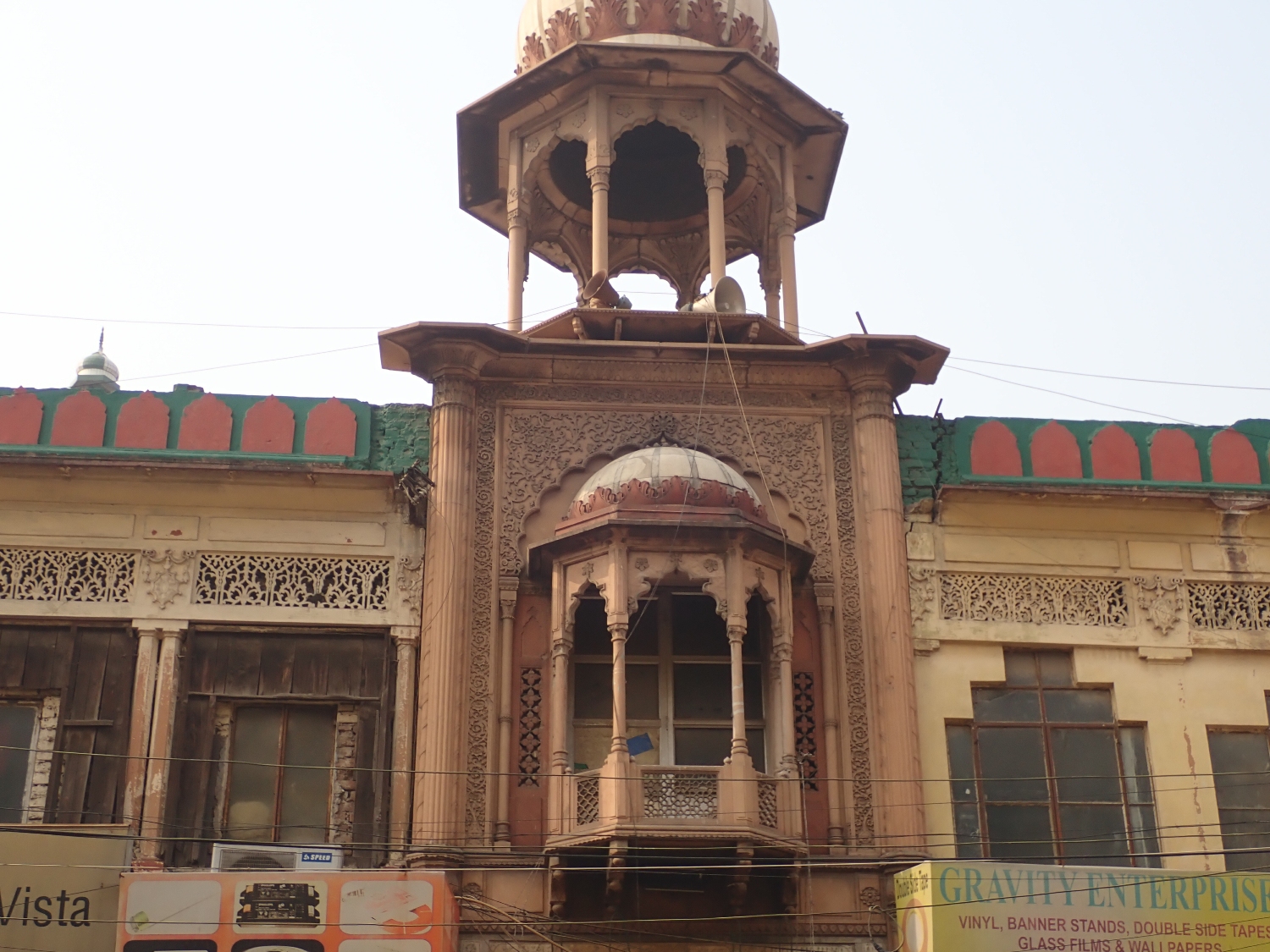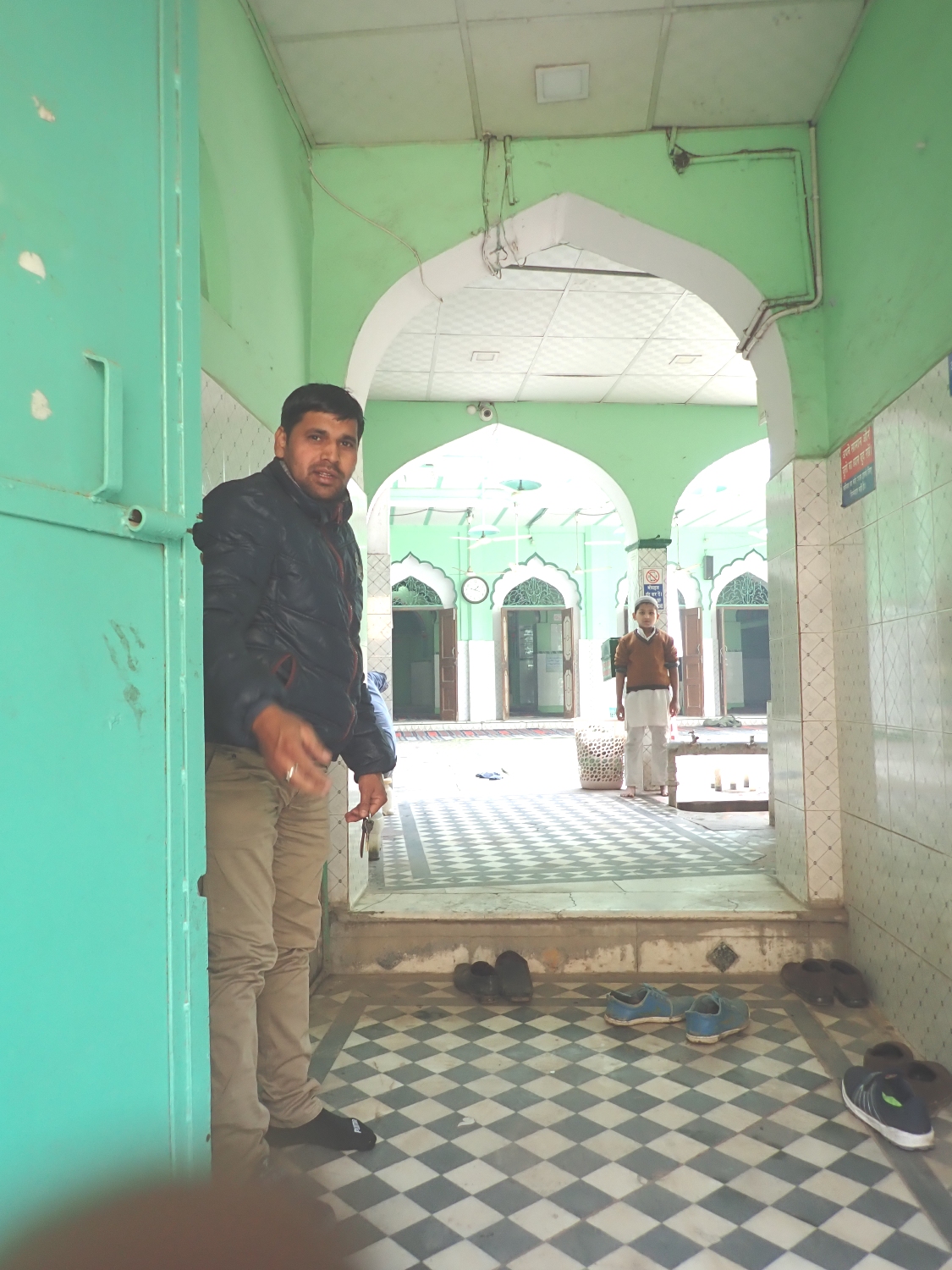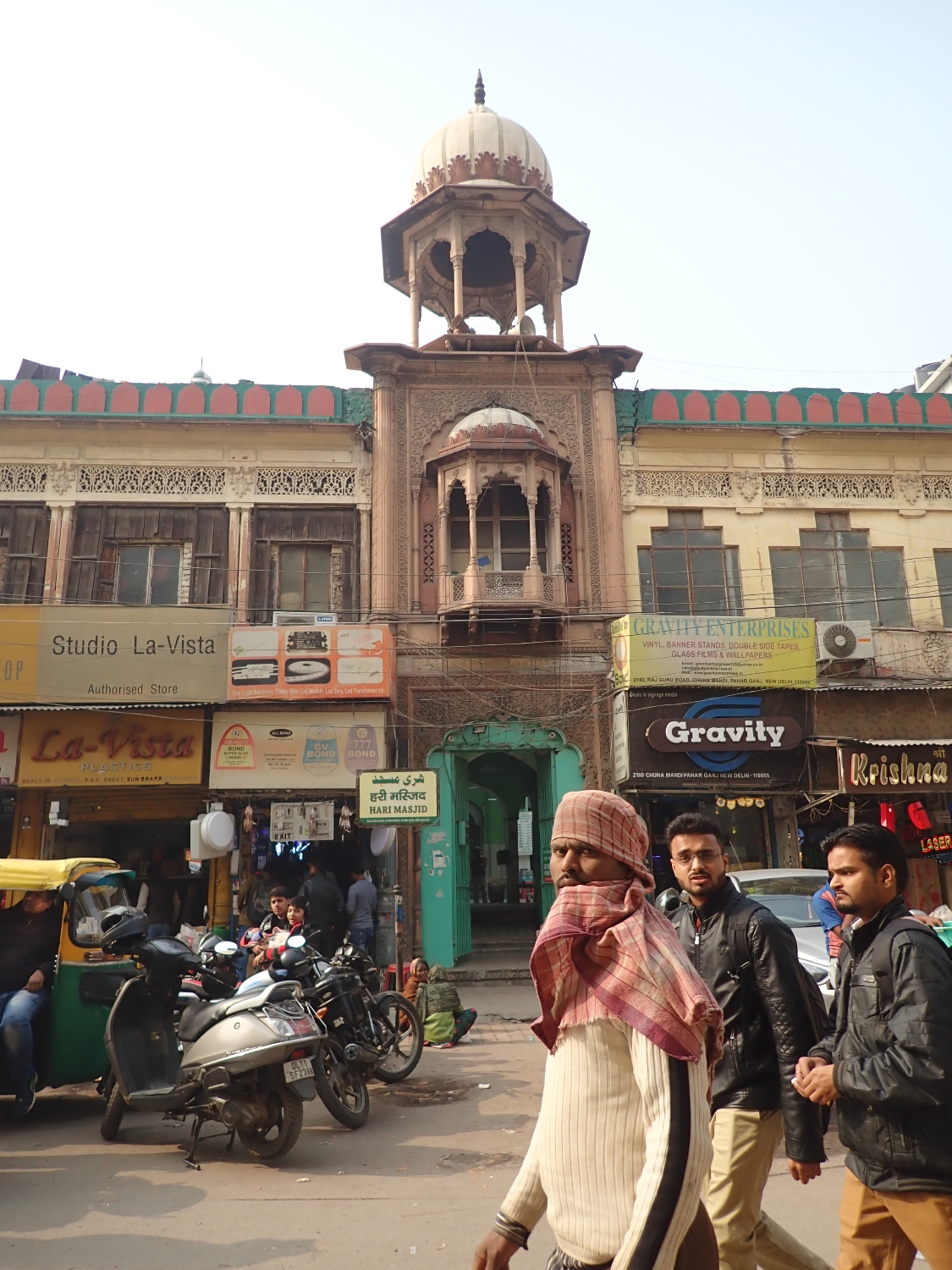



The Hari Masjid, built in the late 19th century, holds significant historical and cultural importance, deriving its name from the distinctive green hue of its structure. This mosque is an integral part of the local faithscape, serving as a place where Muslims gather for congregational prayers. The mosque exhibits a harmonious blend of Indo-Persian architectural style, reflected in its intricate design and structural elements. The facade features an engrossing entrance gateway, framed in a multicusped arch design. The lower portion of the building has been repurposed into shops, while the upper portion retains original architectural elements, including a balcony supported by ornate columns. The central facade boasts a grand gateway leading to the raised courtyard of the mosque. This trabeated gateway is adorned with a semi-octagonal jharokha set within a rectangular frame, flanked by circular pilasters. The jharokha, featuring multi-cusped arch openings, is crowned by a dome and surmounted by an octagonal chhatri with slender, circular columns supporting multi-cusped arches. The mosque's roof is highlighted by an impressive bulbous dome, embellished with a lotus pattern at its base, and a parapet adorned with kangooras. Two corner minarets further enhance its grandeur. Inside, the walls display intricate tile work, while the floor is crafted from marble, adding to the structure's elegance. The facade is made of red sandstone, while the dome is constructed from white marble. The design and lattice work are executed in buff sandstone, showcasing the craftsmanship of the era. Despite its age, the mosque continues to function as a vital religious site for the community.